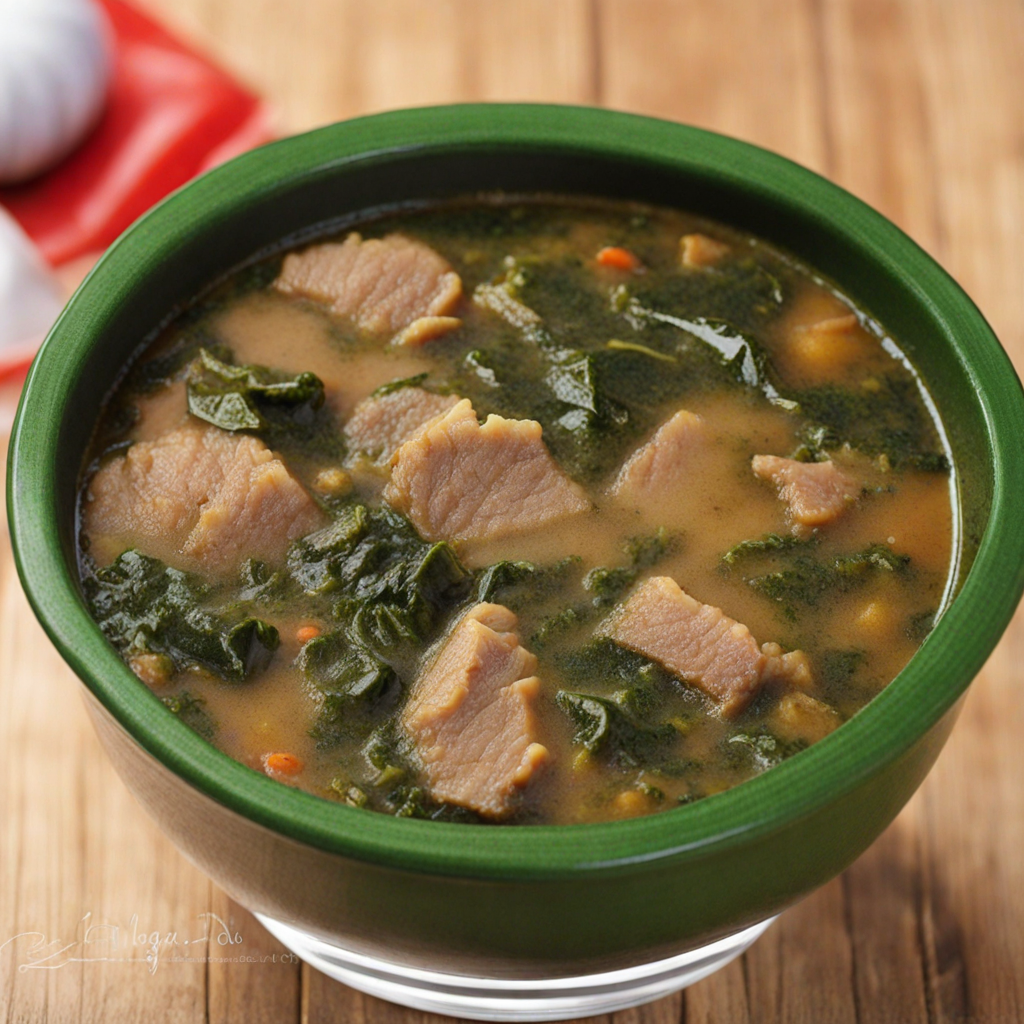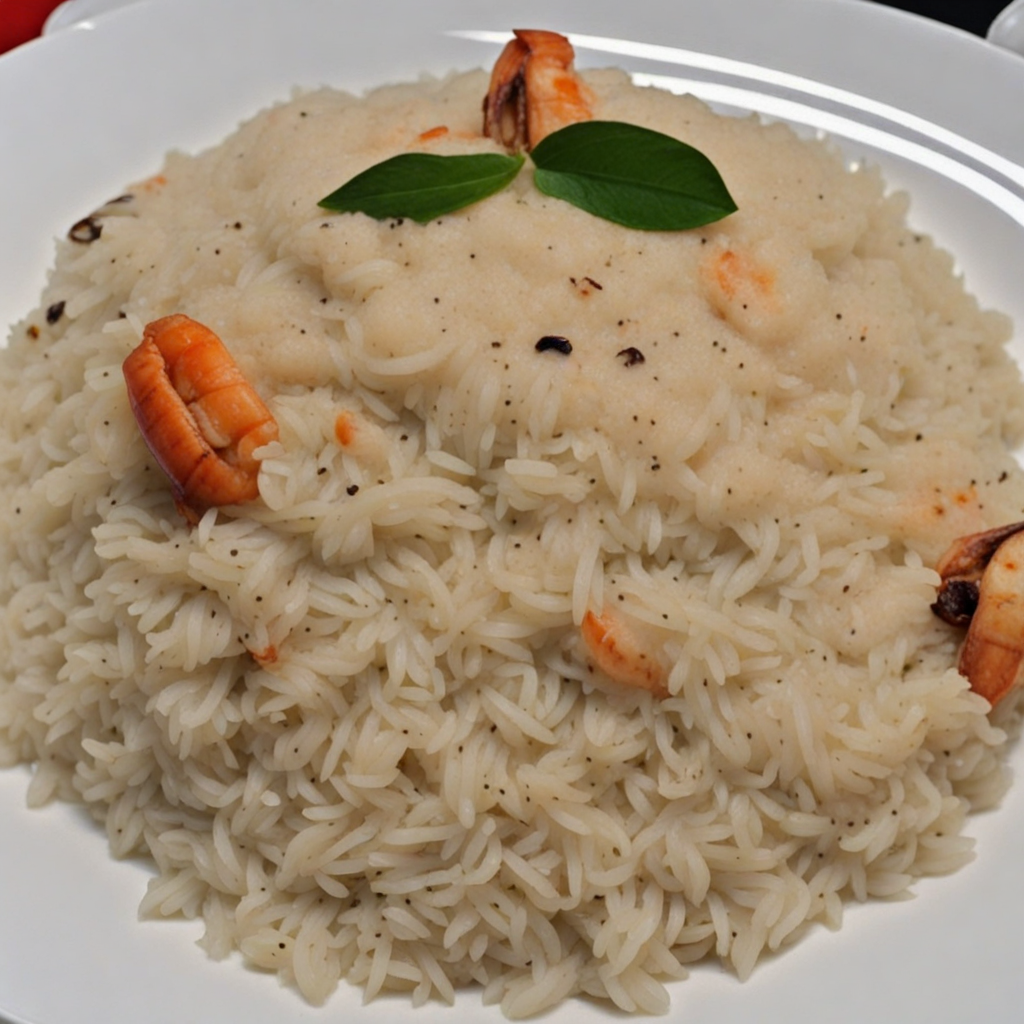Abacha
Abacha, often referred to as African salad, is a traditional dish from Nigeria made from fermented and dried African oil bean, which is then rehydrated and served in a unique, flavorful preparation. The base of Abacha is derived from the starch of the cassava plant, which is processed into a fermented form, yielding a distinctive texture that is both chewy and slightly crunchy. This dish is usually served cold, making it a refreshing option, especially in the warm climate of Nigeria. The vibrant color of Abacha, often a deep brown or dark yellow, is achieved through the addition of palm oil, which not only enhances its appearance but also imbues it with a rich, earthy flavor. Abacha is typically complemented by a variety of ingredients that add depth and complexity to the dish. Commonly included are diced onions, pepper, and sometimes fish or meat, which contribute a savory element to the overall profile. A unique spice blend, often featuring a mix of locust beans known as 'iru' or 'ogiri,' further elevates the taste with its pungent and umami characteristics. The combination of these ingredients results in a delightful medley of flavors and textures, making each bite a culinary adventure. This dish is often garnished with fresh vegetables like sliced tomatoes and avocado, as well as a sprinkle of ground crayfish or nuts, which add a pleasant crunch and a hint of nuttiness. Abacha is not just a meal; it is a celebration of Nigerian culture, often enjoyed during gatherings and festivities. Its nutritional profile, rich in carbohydrates and healthy fats, makes it not only a delicious choice but also a satisfying one, perfect for anyone looking to explore the diverse and vibrant flavors of Nigerian cuisine.
How It Became This Dish
The History of Abacha: Nigeria's Cherished Fermented Delicacy Abacha, often referred to as African salad, is a traditional Nigerian dish that has gained recognition for its unique flavors, vibrant presentation, and cultural significance. This dish, made primarily from fermented and dried cassava, is not just a culinary delight but also a representation of the rich history and diverse cultures of Nigeria. #### Origins of Abacha Abacha hails from the southeastern part of Nigeria, particularly among the Igbo people, who are known for their vibrant culinary heritage. Cassava, the primary ingredient, is a starchy root vegetable native to South America but has become a staple in many African diets due to its adaptability and resilience in various climates. The introduction of cassava to Africa is attributed to the transatlantic trade routes during the 16th century, where it was brought over by Portuguese traders. Over time, cassava became a fundamental part of the African diet, especially in Nigeria. The process of making Abacha involves peeling cassava roots, soaking them in water, and then fermenting them to develop the desired flavors. This fermentation process not only enhances the taste but also makes the cassava more digestible and nutritious. The cultural practice of fermentation reflects the ingenuity of the Igbo people, who have long understood the benefits of food preservation and flavor enhancement. #### Cultural Significance Abacha is more than just a dish; it is a culinary expression of identity and tradition among the Igbo. It often features in various cultural celebrations, festivals, and gatherings, symbolizing hospitality and community. In many Igbo households, serving Abacha to guests is a sign of respect and honor. The dish is typically served with a variety of accompaniments, including palm oil, ugba (oil bean), onions, and spices, which together create a colorful and inviting presentation. One of the most notable aspects of Abacha is its connection to the concept of "nkwobi," a dish made from cow foot that is often enjoyed alongside Abacha. These two dishes are frequently served together during social gatherings, highlighting the communal aspect of dining among the Igbo people. The preparation and sharing of Abacha foster social bonds and reinforce cultural ties, making it an integral part of communal identity. #### Development Over Time The evolution of Abacha can be traced through various historical and socio-economic changes in Nigeria. In the pre-colonial era, the Igbo people relied heavily on indigenous ingredients and traditional cooking methods. The introduction of palm oil, which is a crucial component of Abacha, dates back to ancient times when oil palms were cultivated extensively in West Africa. The use of palm oil not only adds richness to the dish but also reflects the agricultural practices of the region. During Nigeria's colonial period, the influence of British and other foreign cuisines began to permeate local culinary practices. While some traditional dishes faced decline, others, like Abacha, adapted and thrived. The incorporation of new ingredients and cooking techniques led to variations of the dish, catering to changing tastes and preferences. For instance, the addition of protein sources like fish or meat has become common, transforming Abacha into a more robust meal that appeals to a wider audience. In modern times, Abacha has transcended its regional roots and gained popularity beyond the southeastern states of Nigeria. As globalization and migration have increased, so has the exposure of Nigerian cuisine to international palates. Abacha is now featured in Nigerian restaurants worldwide, and its unique flavor profile has attracted the attention of food enthusiasts and chefs alike. The dish has become a symbol of Nigerian culinary heritage, representing the fusion of tradition and modernity. #### Contemporary Interpretations and Global Recognition The contemporary culinary landscape has seen Abacha being reimagined in various forms. Chefs are experimenting with the dish, incorporating global ingredients and techniques while maintaining its traditional essence. For example, fusion versions of Abacha may include avocado, grilled meats, or exotic spices, appealing to a broader audience while celebrating its rich history. Moreover, the rise of social media platforms has played a significant role in promoting Abacha. Food bloggers and influencers showcase the dish, elevating its status and introducing it to younger generations and international food lovers. This digital exposure has sparked interest in traditional Nigerian cuisine, leading to a resurgence of interest in dishes like Abacha. #### Nutritional Value and Health Benefits Abacha is not only celebrated for its taste but also for its nutritional value. Cassava is a good source of carbohydrates, providing energy for daily activities. When fermented, the nutritional profile of cassava improves, increasing its digestibility and enhancing its probiotic properties. Furthermore, the addition of palm oil contributes healthy fats, while other ingredients like ugba provide essential vitamins and minerals. In recent years, there has been a growing interest in traditional foods and their health benefits. Abacha, with its fermented nature, is often highlighted for its potential to support gut health and digestion. As people seek healthier eating options, traditional dishes like Abacha are being rediscovered for their nutritional advantages. #### Conclusion Abacha is more than just a dish; it is a testament to the rich culinary heritage of Nigeria and the resilience of its people. From its origins among the Igbo to its contemporary adaptations, Abacha embodies the spirit of community, tradition, and innovation. As it continues to evolve and gain recognition on a global scale, Abacha remains a cherished symbol of Nigerian culture, inviting all to experience the flavors and stories that define this remarkable dish. Whether enjoyed at a bustling market, a family gathering, or a fine dining establishment, Abacha serves as a delicious reminder of Nigeria's diverse culinary landscape and the power of food to connect people across time and space.
You may like
Discover local flavors from Nigeria







